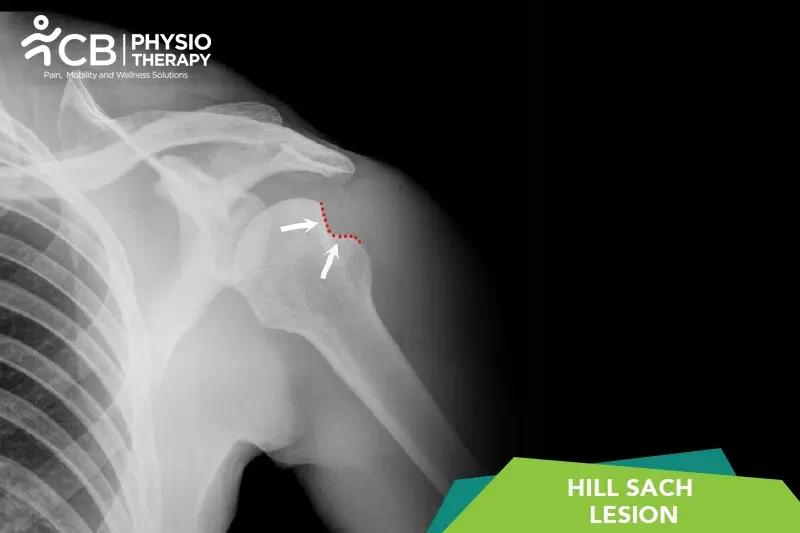Rest and Immobilization:
The shoulder may be immobilized in a sling for a period (usually 2–4 weeks) to allow healing.
Ice Therapy:
Apply ice to reduce inflammation and pain.
Transcutaneous Electrical Nerve Stimulation (TENS):
Purpose: TENS is commonly used for pain relief. It works by sending mild electrical impulses through the skin to stimulate nerves and reduce the perception of pain.
Application: Electrodes are placed around the shoulder joint to target the area of pain.
Effectiveness: TENS can help reduce discomfort during rehabilitation exercises or post-dislocation recovery, making therapy sessions more tolerable.
Neuromuscular Electrical Stimulation (NMES):
Purpose: NMES is used to strengthen weakened muscles by stimulating muscle with electrical impulses.
Application: Electrodes are applied to the muscles around the shoulder joint, such as the rotator cuff muscles or deltoid, to improve strength and stability in the shoulder. This is especially helpful after immobilization or surgery, where muscle atrophy may occur.
Effectiveness: NMES helps prevent muscle weakness and enhances muscle reactivation during rehabilitation.
Interferential Current (IFC) Therapy:
Purpose: IFC therapy is used to reduce pain and inflammation by delivering a low-frequency electrical current deep into the tissue. It is thought to promote healing and reduce swelling.
Application: Electrodes are placed in a cross pattern around the shoulder joint, and a low-frequency current penetrates deep into the tissue.
Effectiveness: IFC is beneficial in managing post-dislocation inflammation and improving pain control during early rehabilitation stages.
Ultrasound Therapy (with Electrical Stimulation):
Purpose: While ultrasound is not an electrical modality in itself, it is often combined with electrical stimulation for deep tissue healing and pain relief.
Application: The ultrasound device uses sound waves to generate heat deep within the tissues, while electrical stimulation may be applied concurrently to further improve pain relief and promote tissue healing.
Effectiveness: The heat from ultrasound improves blood flow, reduces inflammation, and accelerates tissue repair, which is especially useful during the recovery phase after injury or surgery.
Iontophoresis:
Purpose: Iontophoresis is used to deliver anti-inflammatory medications (like corticosteroids) through the skin using a mild electrical current.
Application: A medicated pad is applied to the affected area, and a low-level electrical current drives the medication into the tissue to reduce localized inflammation.
Effectiveness: This modality is helpful in reducing inflammation and pain in the shoulder, particularly after dislocation or surgery.
High-Voltage Pulsed Galvanic Stimulation (HVPGS):
Purpose: HVPGS is used for pain relief, reducing edema (swelling), and promoting tissue healing by delivering a high-voltage, low-amplitude current.
Application: Electrodes are placed around the injured area, and electrical pulses help to stimulate blood flow and reduce swelling.
Effectiveness: This can be used in the early stages of rehabilitation when there is significant pain and swelling, particularly after an acute dislocation or surgery.
Functional Electrical Stimulation (FES):
Purpose: FES is used to restore or enhance functional movement by using electrical stimulation to activate muscles in a coordinated manner.
Application: Electrodes are placed on key muscle groups to mimic natural movement, helping to improve shoulder function during the rehabilitation process.
Effectiveness: Useful in restoring muscle control and movement patterns, especially after surgery or prolonged immobilization.
Passive and Assisted ROM Exercises:
Gentle range-of-motion exercises like pendulum movements to prevent stiffness, focusing on pain-free motion.
Scapular Mobilization:
Gentle scapular mobilization to maintain scapulothoracic rhythm.
Isometric Exercises:
Gentle isometric exercises for the shoulder muscles (deltoid, rotator cuff) to maintain muscle tone without stressing the joint.
Active-Assisted ROM:
Gradually progress to active-assisted ROM exercises, such as using a pulley or wand to move the arm.
Stretching Exercises:
Focus on stretching the posterior capsule, rotator cuff, and other shoulder muscles to prevent stiffness.
Strengthening Exercises:
Begin strengthening the rotator cuff muscles (supraspinatus, infraspinatus, teres minor, subscapularis), which play a key role in shoulder stability.
Isometric to Isotonic Exercises:
Transition from isometric to isotonic exercises using light resistance bands.
Scapular Stabilization:
Exercises to strengthen the serratus anterior and lower trapezius to improve scapular control.
Proprioception and Neuromuscular Control:
Use proprioceptive exercises such as ball stability exercises to improve joint sense and stability.
Pendulum and Codman Exercises: To maintain joint mobility without stress.
Progressive Resistance Exercises:
Gradually increase resistance with bands, free weights, or dumbbells to strengthen the rotator cuff, deltoid, and scapular muscles.
Rotator Cuff Strengthening:
Focus on exercises like:
External and Internal Rotation:
Using resistance bands or weights.
Scapular Retraction/Protraction:
Using resistance bands.
Shoulder Shrugs and Rows:
For overall shoulder and scapular strength.
Closed-Chain Exercises:
These include exercises like wall push-ups, progressing to weight-bearing exercises (plank variations) to improve joint stability.
Core and Trunk Stabilization:
Engaging core muscles to improve overall shoulder function and stability during dynamic movements.
Functional Exercises:
Gradually introduce sports-specific or daily activity-related movements to restore function and prevent injury recurrence.
Dynamic Shoulder Stabilization:
Focus on dynamic stability exercises, such as throwing or catching exercises with a medicine ball, or sport-specific drills.
Plyometrics:
Advanced plyometric exercises like push-ups, ball throws, or other explosive movements may be introduced for athletes or individuals returning to high-demand activities.
Overhead Strengthening:
Gradually introduce overhead strengthening and functional movements, ensuring that the shoulder is stable and pain-free during these activities.
Endurance Training: Incorporate endurance-based exercises to help the shoulder withstand repetitive or prolonged activities without fatigue.
Functional Movement Patterns: Reinforce proper movement patterns during complex activities, like reaching, lifting, or throwing.
